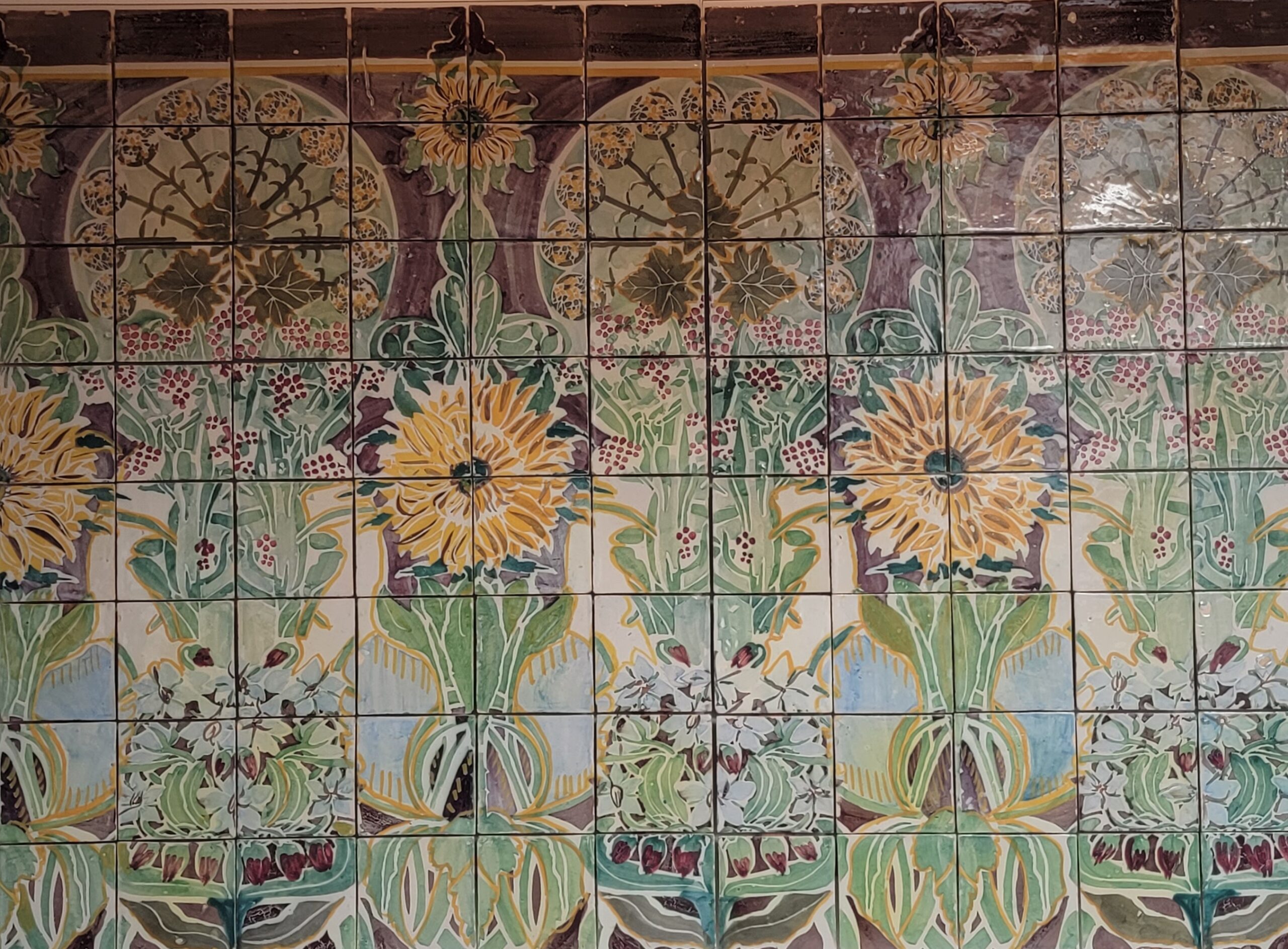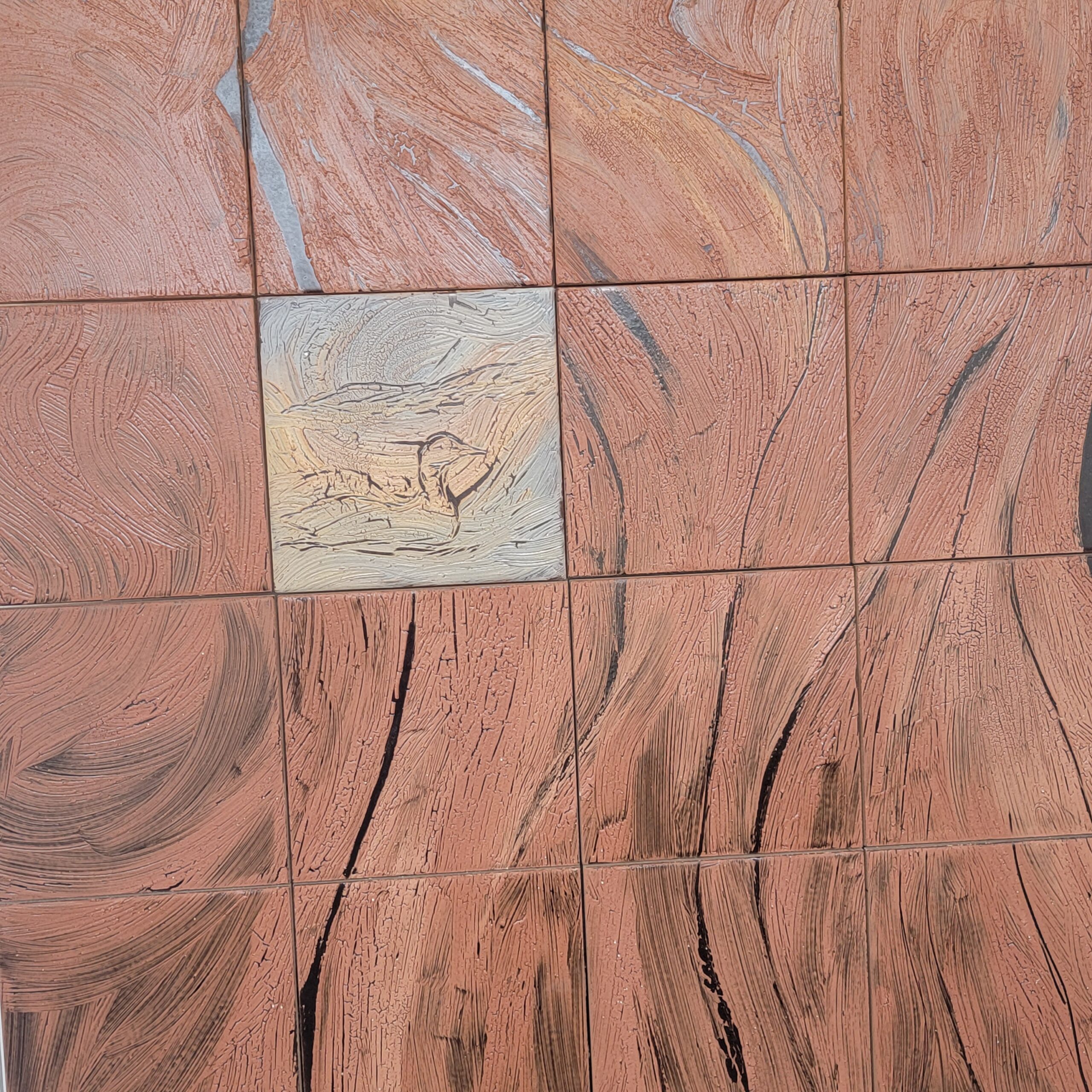I’m in Lisbon, the capitol of Portugal, where all is calm, except at the Fado clubs and probably a few bars, and it’s 6 hours later than my home state, Colorado, where the polls are still open, and where I voted a couple of weeks ago. A vote like many other early votes that won’t be counted for some time, thus the actual outcomes won’t be known probably for a few days, maybe a week or two. I completed my “get out the vote” letters, emails, and texts before I left, so I don’t have too much guilt about not being there.
After spending the better part of an hour walking mostly down hill shuttered up in my poncho through a typical Lisbon downpour, I spent the rest of the day, somewhat damp, but thoroughly enjoying and wandering through the Museu Nacional do Azulejo (National Tile Museum). Not surprisingly, the word Azulejo comes from Arabic al-zillīj الزليج
The Moorish invasion of Spain brought many aspects of a cultured, civilized world to the Iberian peninsula, colored tiles being one, but the Portuguese quickly made them their own with new techniques. Interestingly, it’s possible the Moors learned about such tiles from their discoveries of ancient Roman floors and byways in northern Africa. I have seen several locations in the Near East and southeastern Europe of well-preserved beautiful and intricate Roman tile works from floors to walls to paths and byways, intact in the present.
The Portuguese adapted colored tiles to their Catholicism to add to the extensive decoration of their churches, chapels, and cathedrals, but also in more plebian ways too. Starting in the 14th century and continuing into the present, they have experimented with the craft and its intrinsic artistry.
The Portuguese were consummate navigators and the first explorers from continental Europe, not counting the Vikings. They may well have learned of the Newfoundland fishing grounds from the Vikings or discovered them on their own during their explorations. At any rate they started fishing that area in the 1500s. Eventually driven out by French and British privateers, cod then was imported, but their cod fishing was revived in the 1900s. Those western north Atlantic fishing areas led to their national dish: cod. Codfish or bacalhau, served at Christmas, Easter, for birthdays, anniversaries; salted, baked, roasted, fried, poached, in stew, soup, papillote, and more; presumably 365 ways to prepare it. Why is their national dish not something from their own extensive coast? Possibly to celebrate and remember their extensive seagoing capabilities from boat building to navigation to exploration to deep sea fishing. Because of the extensive distance the caught cod must travel, at least in the earlier centuries, it was salted for preservation. To this day, you will see large slabs of salted cod in food stores.
Here is a wonderful example of a tile of their “heaven and earth machine.” It’s a representation of an armillary sphere, a metallic astronomical instrument used in ocean-going navigation, and today represented on the Portugeuse flag. This tile was one of a large order by King Manual I in 1508. They are on a wall of the Palácio da Vila in Sintra outside Lisbon, where they can still be seen. It represents both the exploration prowess of the Portugeuse, but also the experimentation of their tile makers with a type of bas-relief effect.

Heaven and Earth Machine, 1508
What has all this seafaring to do with colored tiles? When you see the elephants, monkeys, parrots, lions, and Chinese pagodas in their early tiles, you know someone saw these somewhere else. I remember years ago being in Mombasa, Kenya and visiting the old Portuguese fort there, built in 1593. I will return to Portugeuse seafaring in a future post, but now, let us look at some tiles.
One of my favorites is this odd one: The Marriage of the Hen, created about 1660 to 1667. Note the elephant, the numerous monkeys in attendance and as guests on their way, and the hen sitting in the carriage. I wondered if it was meant as a subtle political joke about a royal marriage, which could have been the one between Maria Francisca of Savoy and Alfonso VI. She was extremely attractive; Alfonso was not, nor mentally competent. The marriage was arranged by France’s Sun King, Louis XIV, to connect France with Portugal. The marriage was never consummated and was annulled. She then married Alfonso’s brother who basically took over from Alfonso and kept him a prisoner, more or less. Thus, Maria was twice Queen of Portugal. If anyone can figure out why that might make her a hen, let me know.
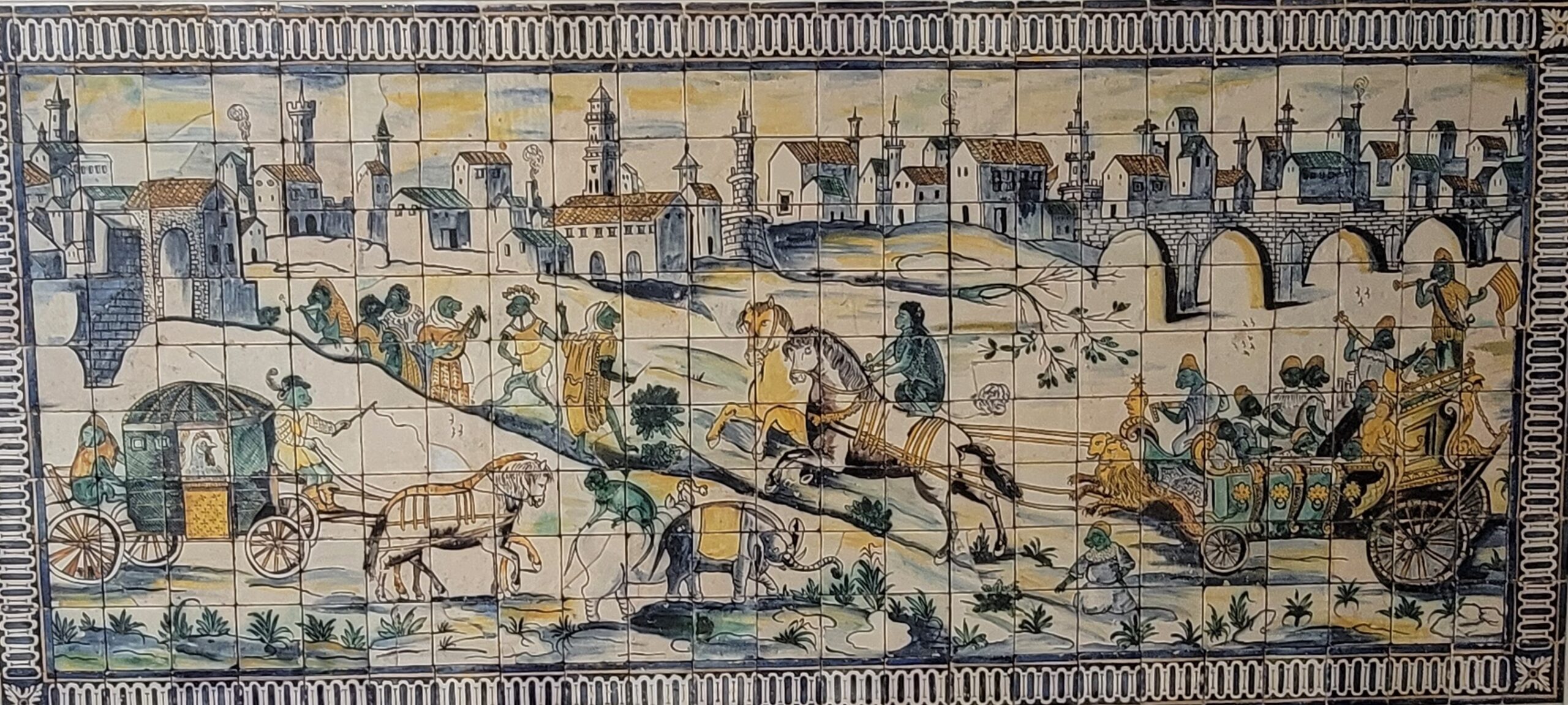
The Marriage of the Hen, 1660-1667
This one was created in about 1700 and is part of a huge panorama of Lisbon along the Tagus River. It is unique in that it shows the city before the destruction of the 1755 earthquake. Notice the number and variety of boats and ships.
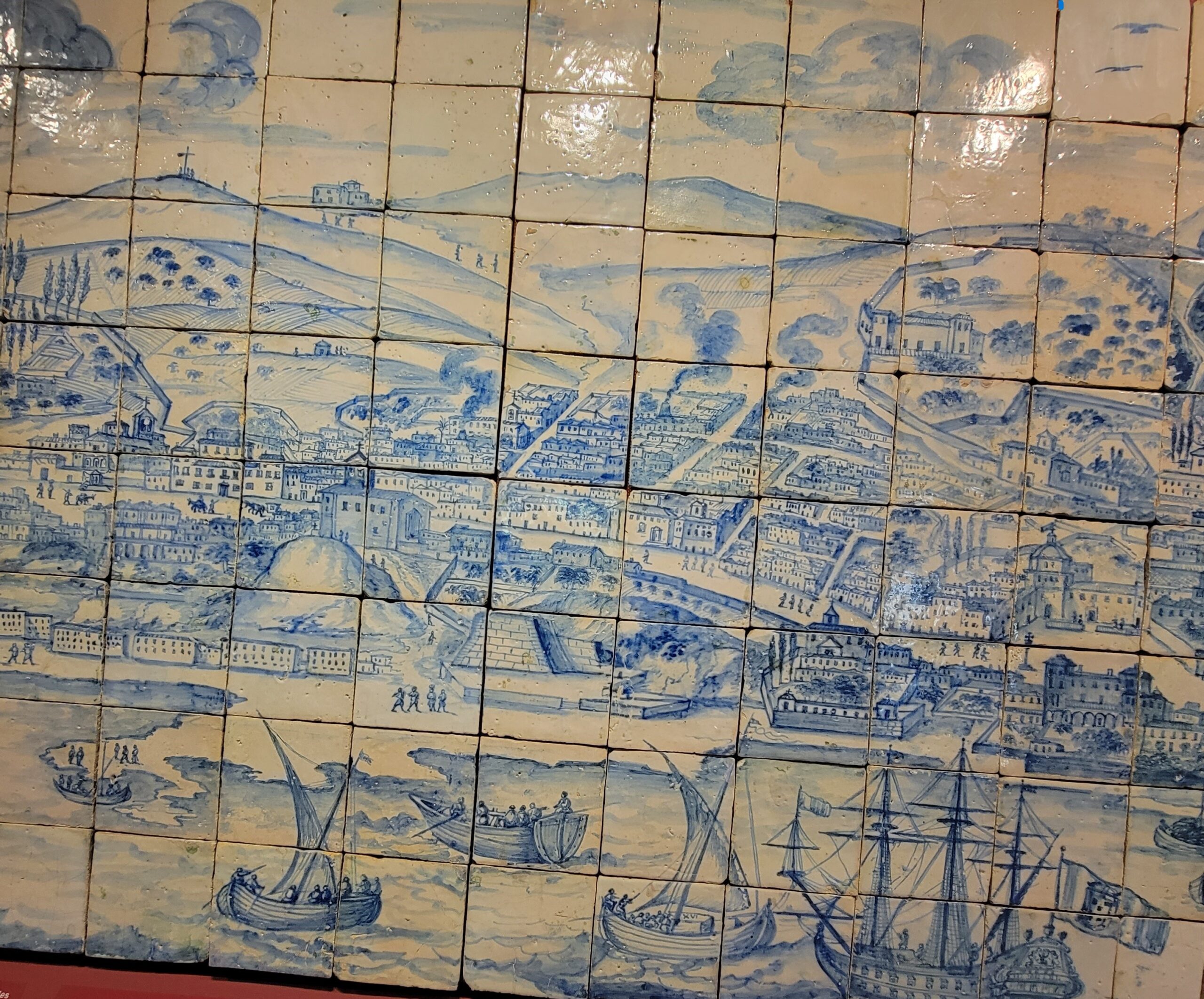
Section of Lisbon Panorama, @ 1700
Here is another from the early 1700s based on a mythological theme, as many were. This one a segment of a larger work showing Neptune/Poseidon and Coronis, who is turning into a crow, based on Ovid’s Metamorphosis. In earlier times and even today, an element of mythology is often connected to religion. When visiting a less-traveled area of Guatemala years ago, my mother and I noticed that pagan/mythology element present in a local Catholic ritual.
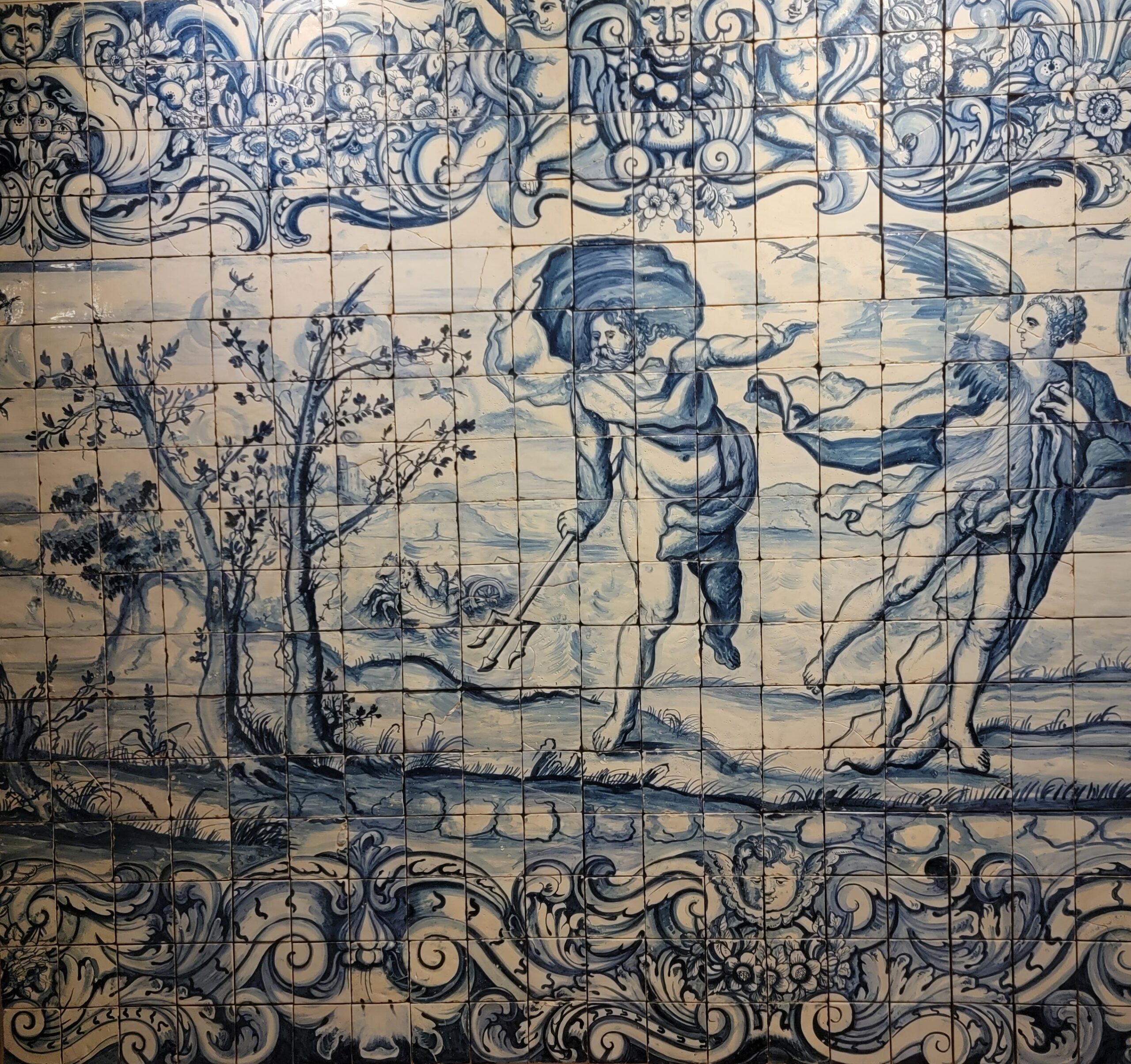
Mythology Theme: Neptune/Poseidon and Coronis, early 1700s
To continue with early non-religious themes, I called this one Ego.
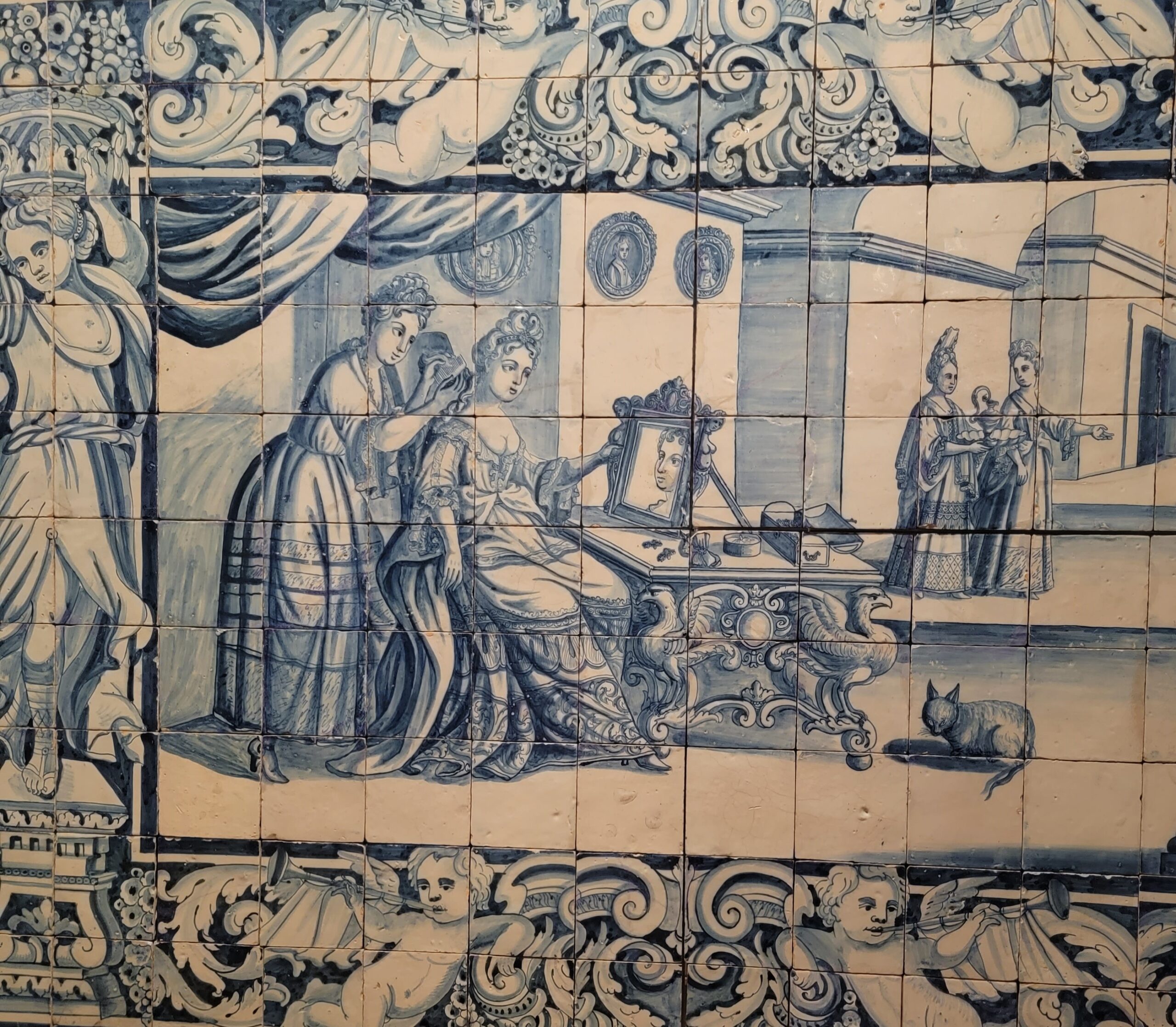
“Ego” 1700s
And here are a couple of modern ones: sunflowers to make Van Gogh proud, and a section of a much larger modern piece that felt like water moving, maybe the Tagus River as it flows past Lisbon. Both were created in the 20th Century.
